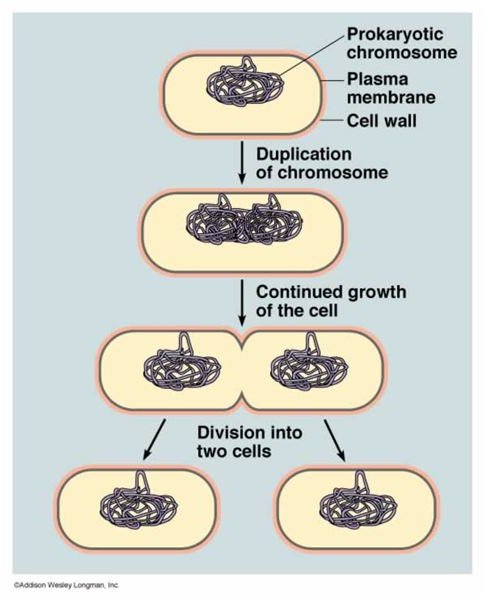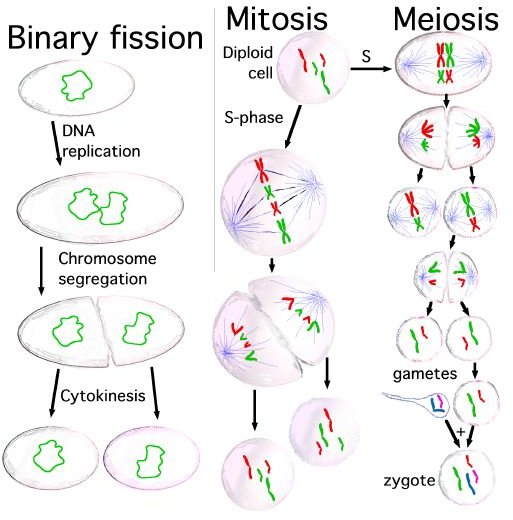A Biology Study Guide on Cell Division in Bacteria
The Basics of Cell Division
Cell division is the process in which a single cell gives rise to two or more cells. This process involves the sharing of genetic material.
Here is a primary biology study guide that provides more insight on the process of bacterial cell division.This biology study guide even provides URL’s for some of the sites that provide more information on cell division in bacterial cell.
This guide concentrates on approaching the different aspects of cell division. One can also get help from samples, experiments, observation and modeling done in the classroom along with this study guide.
Comparison of Types
There are two different types of organisms, namely the prokaryotes and the eukaryotes. The process of cell division varies among these organisms. In prokaryotes, cell division process is more simple than that in eukaryotes. The process of cell division in prokaryotes is termed as mitosis or asexual reproduction. In eukaryotes, cell division process named meiosis or sexual reproduction takes place along with mitosis.
Mitosis is quite simple and the newly formed daughter cells are capable of reproducing new cells. The genetic composition of the parent and the daughter cells remains the same. On the other hand, meiosis is a complex process during which the chromosome number or the genetic material is reduced to half in the daughter cells. The daughter cells formed after meiosis can only reproduce new cells by combining with another cell.
Bacterial Cell Division: A Complete Overview!
Bacterial cell division is much more simple than mitosis. Cell division in bacterial cell begins with the replication of DNA which is carried out by a set of enzymes that generally form a ring called the FtsZ ring, at the site of replication. The overall process of cell division results in the formation of two DNA molecules.

The bacterium with two DNA molecules separates into two cells by a process known as binary fission. You can find details of bacterial cell undergoing binary fission, cell division by mitosis and meiosis by clicking this link about cell division published by Estrella Mountain Community College. This will help you clarify the difference in the different forms of cell division and how the bacterial cell division varies from others.
The Step-by-Step Process
1st Step: DNA Replication
After completion of the process of cell division, the two newly formed cells share the same amount of genetic material. This is achieved by the replication of the double stranded DNA of the parent cell. The two DNA strands are termed as the leading and lagging strands. In E.coli, DNA replicates in a bi-directional manner starting from the origin of replication. The two strands of DNA are unwound by a protein named DNA B protein. To prevent the two strands from pairing together, they are coated by single strand binding proteins.
The actual replication of the two strands begins with the help of a protein named DNA A. The point at which the replication begins is termed as ori C. The process of replication takes place in the direction of 5’ to 3’. The synthesis of leading strand which is oriented appropriately takes place without the need of a primer. However, the lagging strand synthesis takes place with the help of a primer, a single stranded RNA. Once the entire chromosome is replicated, the primers are removed and replaced by DNA. Now, the cell possesses two copies of DNA. The next step is the actual cell division i.e. the division of cytoplasm and the membrane.
Cell division in bacterial cell ends with binary fission in which a constriction appears on the membrane at the point where the two chromosomes are joined. The constriction deepens further, dividing the cytoplasm and finally results in the formation of two cells with identical genetic composition. Each of these newly formed cells has genetic composition similar to that of the parent cell and is capable of producing new cells.
A thorough reading of this biology study guide will make you confident in solving bacterial cell division related problems. You can find some practice problems in the below given link.
References
- Image credit: Left: Cell Divison in Bacteria: http://www.anselm.edu/homepage/jpitocch/genbio/binfission.JPG_}_
